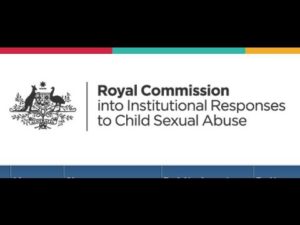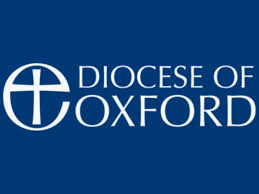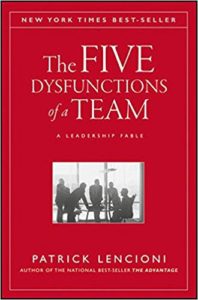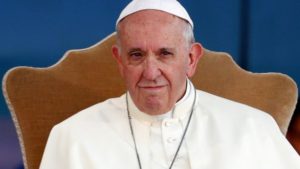 ‘The Lord God has given me…… skill to console the weary with a word in the morning’. These are words from Isaiah that were read last Sunday in church. They started me off thinking about what the word ‘weary’ might mean in the context. I realised very quickly that the prophet was not talking about people who had slept badly or worked too hard. He seems to be speaking about people who were demoralised or psychologically defeated. They needed to hear something that would boost their morale. The word morale is most typically used to describe the attitude which is needed in time of war. It is important equally both for fighting troops and the civilians who have remained at home. When there is a collapse in morale, that is often the prelude to defeat. A government will do everything it can to promote this positive state of mind which we call morale, particularly when a nation is going through the crisis of war.
‘The Lord God has given me…… skill to console the weary with a word in the morning’. These are words from Isaiah that were read last Sunday in church. They started me off thinking about what the word ‘weary’ might mean in the context. I realised very quickly that the prophet was not talking about people who had slept badly or worked too hard. He seems to be speaking about people who were demoralised or psychologically defeated. They needed to hear something that would boost their morale. The word morale is most typically used to describe the attitude which is needed in time of war. It is important equally both for fighting troops and the civilians who have remained at home. When there is a collapse in morale, that is often the prelude to defeat. A government will do everything it can to promote this positive state of mind which we call morale, particularly when a nation is going through the crisis of war.
Morale is one of those words which involves a number of facets. For soldiers to feel able to engage in the stressful activity of fighting effectively, their external circumstances must first be OK. They cannot fight if they do not eat properly or do not have dry conditions in which to sleep. Soldiers need also the loving support of family far away. Emails, telephone communication and letters from home are all almost as essential as adequate food. A further vital part of maintaining good morale are the relationships with their fellow soldiers. It is important to have that strong sense of solidarity with others which is so important for mental well-being. The same thing is needed in their relationship with their officers. They need to be able to trust those over them and have confidence in their leadership decisions. Without the companionship and all the other supports I have mentioned, the ordinary soldier would all too easily collapse mentally and psychologically in a situation of stress brought on by battle.
I once asked an Archdeacon about the morale of the clergy he knew. I asked the question how many of the clergy in his area could be said to have good morale. He said about 50%. I went on to ask whether that meant that the other 50% were in low morale. He replied simply yes, but went into no further detail. It is this issue of the morale of Church of England clergy today that I am concerned about. I know that many bishops would claim that all or most of their clergy are in good spirits – their mental health is functioning well, and they are doing an excellent job. My memory of serving as a parish priest for 40 years is that, with one honourable exception, I never felt able to share anything with a bishop which touched on areas of personal vulnerability. In other words, I never wanted to open up to a bishop in a way that might have allowed a pastoral relationship to evolve. The reason for this was not fear or excessive deference. It was simply that I perceived that a bishop, whatever his pastoral gifts, is first and foremost the guardian of the power of patronage in the church. That power, whether a bishop likes it or not, will always create formality and a certain distance in many relationships with their clergy. I cannot be the only member of the clergy who felt it important to keep my head down when around bishops, those who could potentially make or break my professional future. I raise the question whether any bishop in the Church can really be said to know his/her clergy at depth.
In the year 2018 there are many reasons for clergy to feel under constant stress. This can be because the expectations on clergy have increased and the number of churches they have to look after grow ever more numerous. These external sources of stress have to be added to any internal pressures of domestic or psychological strain. When levels of stress go beyond a certain point, they quickly affect morale badly. Given the fact that few clergy admit stress or ‘weariness’, it will never be easy to quantify the problem across the country. There is a lot at stake to ensure that any problems are hidden as long as possible. A clergyman is not only singularly unqualified for other professions, particularly after middle age, he also has his home and the well-being of family to think about. Breakdown or collapse in a clergy person create a situation that is dire. For every member of the clergy who leaves because of some kind of breakdown, there must be others who struggle on with low morale and in a permanent state of being close to the edge of a cliff.
The purpose of writing this blog is simply to suggest that from anecdotal evidence there is a growing crisis of morale among the Church of England clergy. I know that there will be many who will protest this suggestion to be false. Complete evidence for such a suggestion is clearly lacking. The opposite affirmation is also unsupported by available evidence. We have to base our assessment on anecdote and indirect evidence. Even if my surmise is a complete misreading of the available evidence, I believe that it is still right to bring up this issue of morale in the church. As with the issue of past abuses, failure to discuss a topic does not make it go away. We need a system that will allow the airing of this problem without putting the lives and futures of clergy under threat. Clergy, it can be admitted, enjoy a high level of job security. But the price they have to pay for that privilege is, I believe, very high.
Over the next 20 years, I believe that we are going to face several crises within the parish system. The constant adding of extra churches to each benefice is going to cause increasing stress on the smaller numbers of full-time clergy. While there may be more non-stipendiary clergy coming on stream, these will be deployed to prop up what is already an unwieldy system close to collapse. Another Archdeacon I used to know, who worked in a rural diocese, was proud of the fact that he had succeeded in closing over a dozen churches. He had thus relieved the strain on several country benefices. Since he left the area, no further churches had been closed. What he had started was, he felt, a real contribution to the possibility of the very survival of the church in the countryside.
It is the contention of this post that there are many weary clergy in the biblical sense. Much of this weariness is hidden. I have suggested that once again poorly understood power dynamics may lie at the heart of this crisis. Just as the IICSA has shown us how negligent episcopal oversight can hide an epidemic of child sexual abuse for decades, so we see how detachment from the hierarchy can hide from view the real stresses of the parochial system. The revolution that needs to take place has not only to reform the structures but to change some of the unhappy dynamics of communication that exist within the institution itself. Once again, this blog is pleading for a better understanding of the way that power works within the church.








